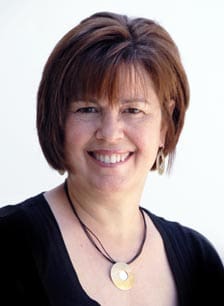The wine industry is constantly faced with new trends, challenges and the pressure to stay ahead of the competition. With that comes the opportunity to innovate.
Each year, Wine Industry Network recognizes five wine industry innovators — not just for their impressive ingenuity or technical advances — but because of how their product and/or service betters the North American wine industry.
By Laurie Wachter
Agrology’s founders set out to help food crop growers beat climate change by making it easier to keep an eye on cultivation practices such as drought irrigation and pest management. Customer requests soon led the 2022 WINnovation award winner to alter its course and refocus on food crops, including grape growers.
CEO Adam Koeppel explains that the 2020 Glass fire in Napa and Sonoma counties made it clear that climate change had made wildfires a persistent danger. Growers told Koeppel, “All these climate change issues are a problem, but what’s killing us is wildfires. We have no idea what’s happening right now, and lab testing for smoke taint is expensive.”
Koeppel and CTO Tyler Locke realized they could adapt their predictive agriculture technology platform to detect wildfire smoke and, more crucially, the volatile organic compounds (VOCs) that cause smoke taint. The start-up team is nimble — recently turning around a request to measure vapor pressure deficits (how fast the air sucks water from the canopy) in less than two weeks — so they soon had this new capability up and running.
 |
 |
 |
Wineries and viticulturists began calling about wildfire smoke detection and, after trying the system, realized the holistic platform could improve how they managed other climate-driven vineyard risks as well, including droughts and extreme temperatures.
The Agrology team places sensors in the vineyard canopy, the air and the soil to monitor moisture, temperature, VOCs, and pests and diseases such as powdery mildew and vine mealybug. The sensors are wired together and beam data to the cloud continuously. Agrology then merges the data and uses machine learning to forecast conditions up to four days into the future so growers can anticipate problems.
The platform is the first effective, affordable and easy-to-use predictive agriculture technology. It can provide block-level weather that shows what’s happening in real-time for each block’s nano-climate and forecast what will occur next.
“During the 2022 September heat dome,” says Koeppel, “Agrology’s heat forecasts for half of a customer’s vineyards were fine, but the blocks in the other half were going to be above 120°F. The customer couldn’t intervene because the crews were harvesting elsewhere. When they did check, they found significant raisining, causing a switch from mechanical harvesting to manual and the loss of 80% of their premium red grapes. Next year, they plan to look at our data predictions to determine each block’s risk before scheduling harvest.”
A mobile phone or tablet will show the grower how vineyard conditions will change for irrigation, pest and disease, spraying, soil, smoke taint and extreme weather conditions.
“It’s always good to have historical data,” says Locke, “but we know our customers don’t have time to parse through this data daily. That’s why we send them push notifications when the forecast is going to cross a threshold. They can tap on the notification and go right into the data points view.”
In the coming months, Agrology is introducing a regenerative agriculture module that uses sensors above the soil, where atmospheric conditions are responsive to soil microbiome changes. Agrology’s real-time feedback will show metrics like soil carbon respiration and soil carbon content to let growers know how their practices are working and let them take corrective or preventive action.
“It was great to see our customers expand their interest from wildfire smoke to our other capabilities, like driving efficiency, managing irrigation and dealing with extreme weather conditions,” says Koeppel. “It doesn’t require changes to cultivation; it helps busy growers see things they might otherwise miss.”
_____________________________________________________________________

Laurie Wachter
Laurie Wachter brings her expertise in consumer behavior, food & beverage marketing and direct-to-consumer sales to writing about innovation and challenges in the consumer packaged goods industry. She works with a global client base from her Northern California Wine Country home.





